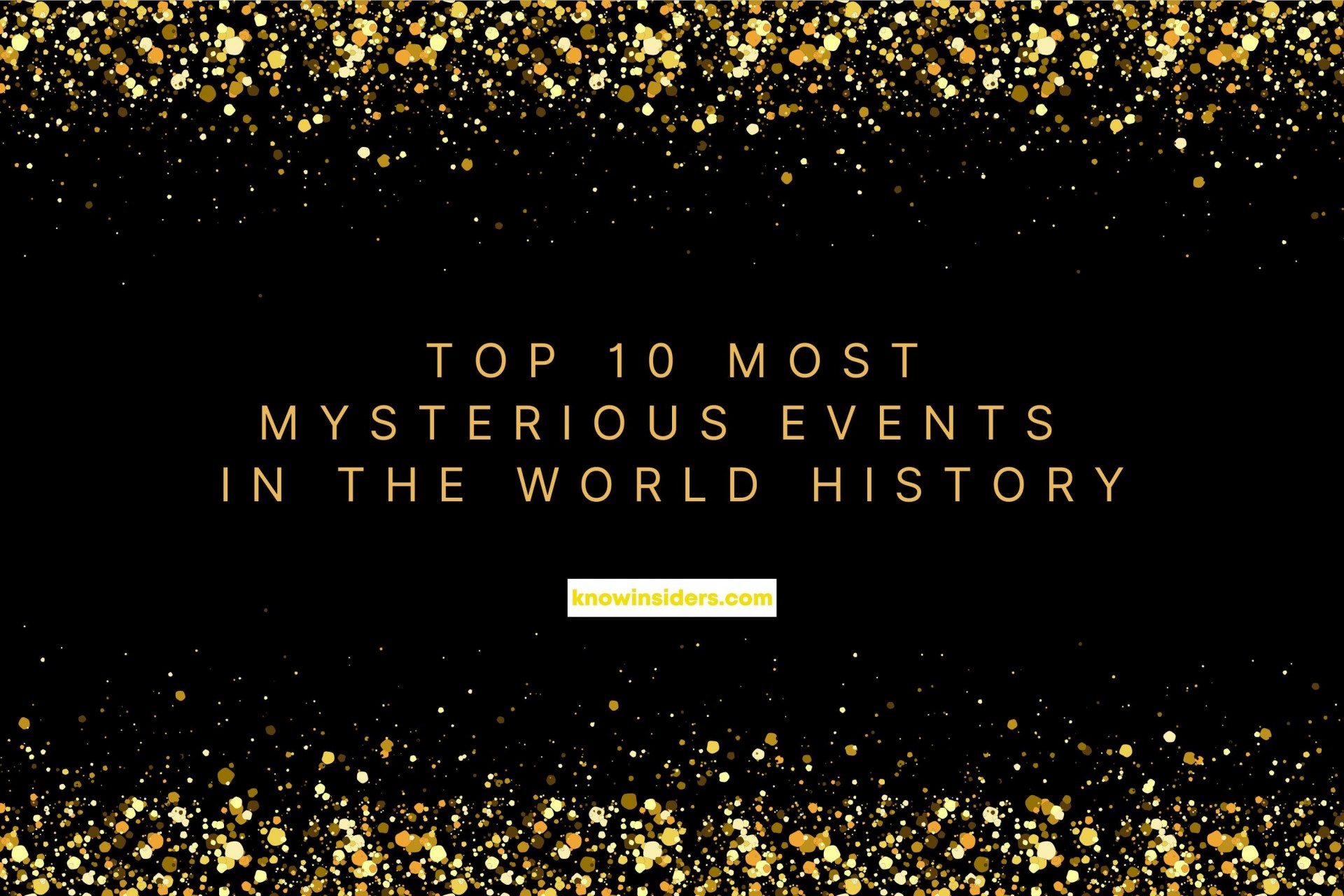Top 13 World Deadliest Events In History
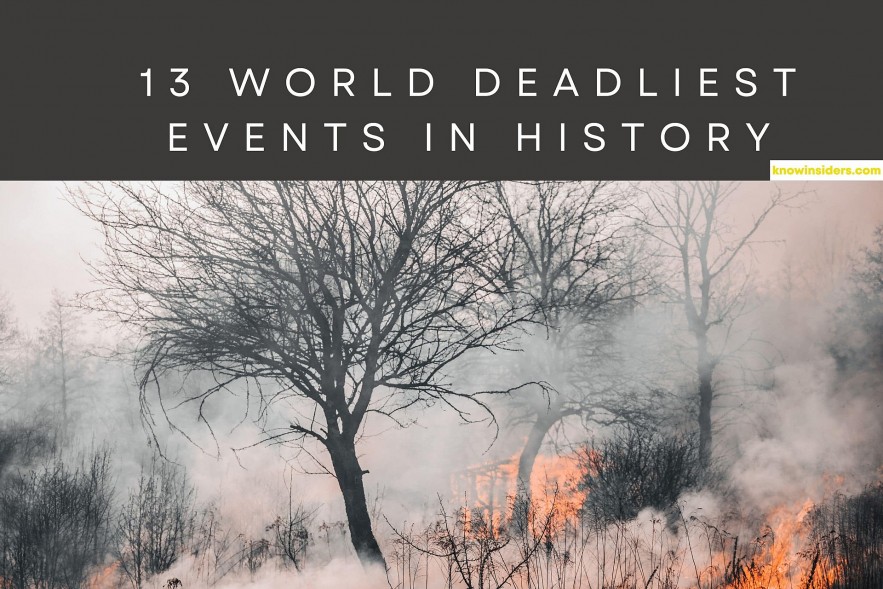 |
| Top 13 World Deadliest Events In History. Photo KnowInsiders |
| Contents |
Throughout human history, there have been many world events that have seen a multitude of deaths and widespread destruction. The 13 entries on this list are ranked according to the number of deaths. While some of the events spanned just a few years, others occurred over centuries.
Top 13 World Deadliest Events In History
1. European Colonization of the Americas (Death Toll Estimate: 100 Million)
When Christopher Columbus, John Cabot, and other explorers in the 15th century found a new continent, it must’ve seemed like the dawn of a new age. Here was a new paradise that adventurous Europeans could call their new home. There was, however, one problem: this land already had an indigenous population.
Over the following centuries, the seafaring Europeans brought vast death tolls to what is now referred to as North and South America. Although war and invasion can account for a hefty chunk of these casualties, the natives’ lack of immunity to European diseases caused the most deaths. Some estimates state that 80% of the Native American population died due to contact with Europeans.
2. World War 2 (Death Toll Estimate: 75 Million)
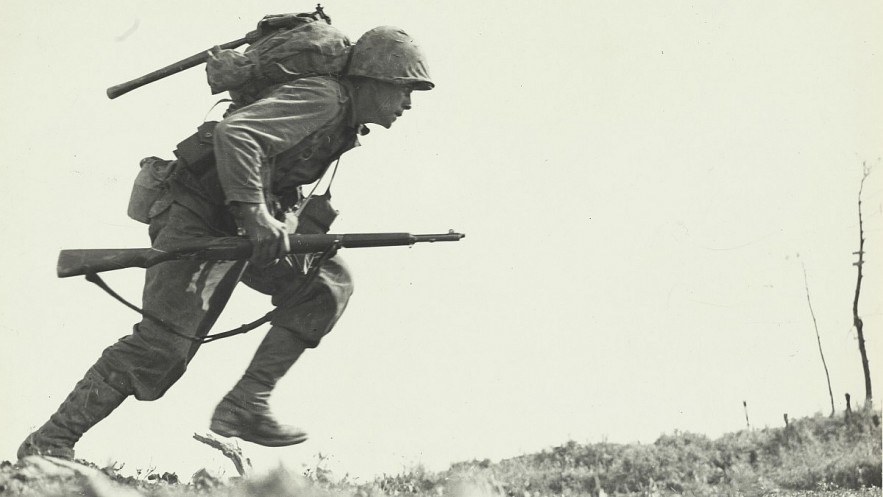 |
| Photo history |
Some 75 million people died in World War II, including about 20 million military personnel and 40 million civilians, many of whom died because of deliberate genocide, massacres, mass-bombings, disease, and starvation.
What was the cause of World War II?
World War II began in Europe on September 1, 1939, when Germany invaded Poland. Great Britain and France responded by declaring war on Germany on September 3. The war between the U.S.S.R. and Germany began on June 22, 1941, with the German invasion of the Soviet Union, known as Operation Barbarossa. The war in the Pacific began on December 7/8, 1941, when Japan attacked the American naval base at Pearl Harbor and other American, Dutch, and British military installations throughout Asia.
What countries fought in World War II?
The main combatants were the Axis powers (Germany, Italy, and Japan) and the Allies (France, Great Britain, the United States, the Soviet Union, and, to a lesser extent, China).
What were the turning points of World War II?
The war in the Pacific turned against Japan during the Battle of Midway (June 3–6, 1942), an American victory that destroyed the Japanese first-line carrier force and, together with the Battle of Guadalcanal, ended Japan’s ability to prosecute an offensive war.
The tide of the war in Europe shifted with the Soviet victory at the Battle of Stalingrad (February 1943). More than one million Soviet troops and tens of thousands of civilians died in the defense of the city, but the destruction of two entire German armies marked the beginning of the end of the Third Reich.
3. World War 1 (Death Toll Estimate: 65 Million)
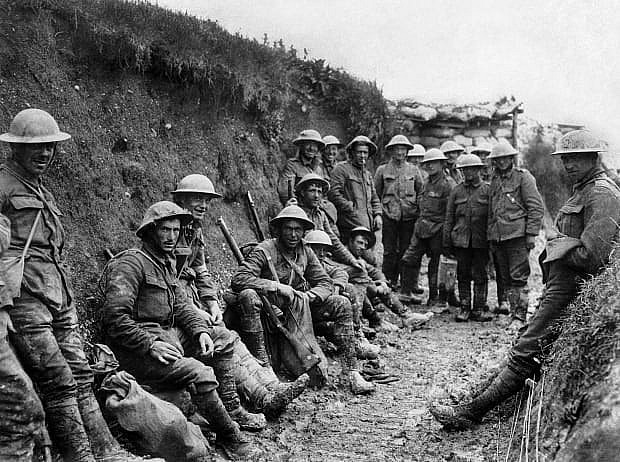 |
| Photo history |
How Many People Died In WW1? Military and Civilian Deaths on Both Sides
The Allies, or Entente Powers, counted around 6 million deaths, the Central Powers 4 million.
Many people died, not from combat, but from diseases caused by the war, a figure estimated at around 2 million deaths. 6 million people went missing during the war and were presumed dead.
Two out of three soldiers died in battle, the rest died due to infections or disease. The Spanish flu also killed a lot of people in prisoner camps.
| Did You Know? When World War 1 began in the summer of 1914, most people assumed the war would be finished by Christmas. The booming of the artillery at the Western front could sometimes be heard all the way back in Britain. German and British soldiers called a truce on Christmas in 1914 and played a soccer game together. |
4. Mongol Conquests (Death Toll Estimate: 60 Million)
If there is one man who could be said to have more blood on his hands than anyone else in history, it is Genghis Khan. Under the leadership of Khan (and successors after his death), the Mongol Empire grew into the largest land empire the world has ever seen—at its peak covering 16% of the Earth. The Mongol army swept across Asia, killing its rivals with great ferocity for the better part of two centuries. The death toll would certainly have been much higher if the Mongols had continued to progress west and into Europe.
Aside from all the killing, it wasn’t all bad under Mongol rule—with religious tolerance given to most faiths, as well as tax breaks for the poor.
READ MORE: What is War & How Many Conflicts or Disputes in the World Right Now
5. 1918-1919 Spanish Flu Pandemic (Death Toll Estimate: 50 Million)
 |
| Photo history |
The 1918 influenza pandemic was the most severe pandemic in recent history. It was caused by an H1N1 virus with genes of avian origin. Although there is not universal consensus regarding where the virus originated, it spread worldwide during 1918-1919. In the United States, it was first identified in military personnel in spring 1918.
It is estimated that about 500 million people or one-third of the world’s population became infected with this virus. The number of deaths was estimated to be at least 50 million worldwide with about 675,000 occurring in the United States. Mortality was high in people younger than 5 years old, 20-40 years old, and 65 years and older. The high mortality in healthy people, including those in the 20-40 year age group, was a unique feature of this pandemic.
6. The Black Death (Death Toll Estimate: 50 Million)
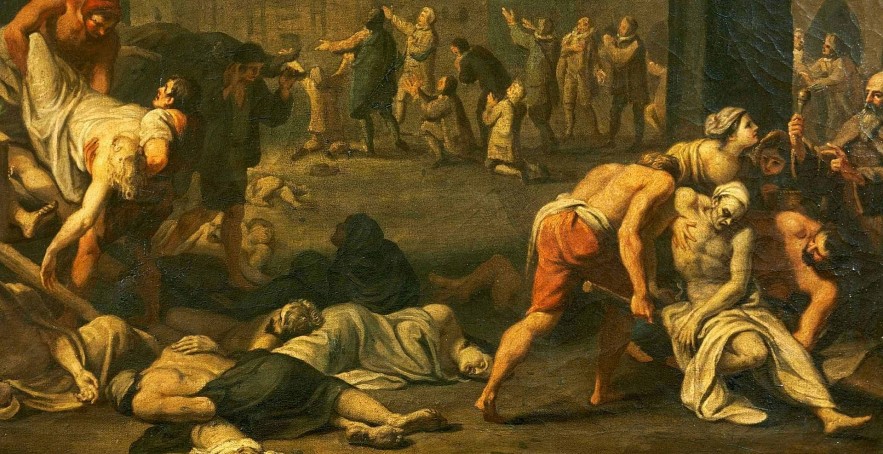 |
| Photo historic UK |
The Black Death was a devastating global epidemic of bubonic plague that struck Europe and Asia in the mid-1300s. The plague arrived in Europe in October 1347, when 12 ships from the Black Sea docked at the Sicilian port of Messina. People gathered on the docks were met with a horrifying surprise: Most sailors aboard the ships were dead, and those still alive were gravely ill and covered in black boils that oozed blood and pus. Sicilian authorities hastily ordered the fleet of “death ships” out of the harbor, but it was too late: Over the next five years, the Black Death would kill more than 20 million people in Europe—almost one-third of the continent’s population.
What were the symptoms of the Black Death?
Symptoms of the Black Death included swellings – most commonly in the groin, armpits and neck; dark patches, and the coughing up of blood.
Medieval observers – and their modern counterparts in 19th-century China and 20th-century Vietnam, observing more recent outbreaks – noted that different strains of the disease took from five days to as little as half a day to cause death.
How many people died because of the Black Death?
In Europe, it is thought that around 50 million people died as a result of the Black Death over the course of three or four years. The population was reduced from some 80 million to 30 million. It killed at least 60 per cent of the population in rural and urban areas. In fact, in some places such as a village on an estate in Cambridgeshire manorial rolls attest that 70 per cent of its tenants died in a matter of months in 1349, and the city of Florence tax records drawn up shortly before and after the Black Death suggest that its toll may have been about the same in 1348.
Where did the Black Death originate, and what areas did it affect?
Breaking out in ‘the east’, as medieval people put it, the Black Death came north and west after striking the eastern Mediterranean and Italy, Spain and France.
It then came to Britain, where it struck Dorset and Hampshire along the south coast of England simultaneously. The plague then spread north and east, then on to Scandinavia and Russia.
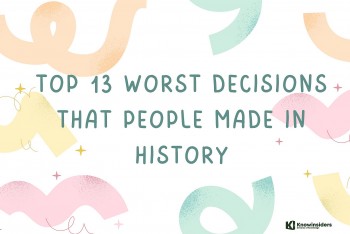 Top 13 Worst Decisions That People Made In History Top 13 Worst Decisions That People Made In History Have you ever made any decision that made you regret after that? How did you feel? In the list below, there were some decisions made ... |
7. Soviet Crimes (Death Toll Estimate: 49 Million)
Under the Soviet Union, from 1917 to 1953, millions of Russians died at the hands of revolution, civil war, famine, and other crimes.
Here is another example of a disaster caused by a country with a vast population trying to change its economic and social landscape in a very short period. Under the Soviet Union, from 1917 to 1953, millions of Russians died at the hands of revolution, civil war, famine, forced resettlement, and other crimes. One man can take most of the blame: Joseph Stalin.
His desire to build a new and better country at any cost—and to keep hold of the power he had gained—was a direct cause of the majority of casualties under Soviet rule. It is hard to fathom how, in 1948, he was nominated for the Nobel Peace Prize.
8. Great Chinese Famine 1958-1960 (Death Toll Estimate: 43 Million)
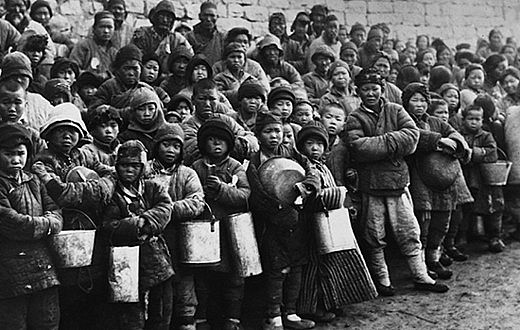 |
| Photo Emory University |
Also know as ‘the great leap forward’, more than 43 million people died under Communist-led China. For two decades the Chinese government maintained that between 10 and 20 million died as a result of drought and bad weather during that time. Now it believed that between 30 and 45 million may have died, making it world's greatest disaster since the Great Plague of the Middle Ages. What is even worse is that catastrophe now seems to have been a direct result of — or at least exacerbated by — Mao's inept attempts at industrialization during the Great Leap Forward. The Great Famine is called “The Three Years of Natural Disasters” in Chinese official discourse.
| Did You Know? Two-three million of the deaths were due to torture and execution. Today in China, The Great Famine is referred to as Three Years of Natural Disasters and the Three Years of Difficulties. Recent estimates place the death toll of The Great Leap Forward and its corresponding famine at 45 million deaths, far greater than the number killed in WWI. |
9. Taiping Rebellion (Death Toll Estimate: 40 Million)
The Taiping Rebellion in 1850 during Qing Dynasty was the reason behind the deaths of 40 million people.
Jump forward a thousand years, and the Chinese are at it again. This time with some help from the French, the British, and some American mercenaries. In 1850, the Qing Dynasty now ruled China. They had suffered some major problems before the rebellion, with natural and economic disasters causing havoc—not to mention the Europeans bringing opium addiction to China. So, up stepped Hong Xiuquan, who, amongst other things, claimed to be the younger brother of Jesus Christ. Hong established the Taiping Heavenly Kingdom—and the carnage began. The Taiping Rebellion happened at roughly the same time as the American Civil War, though the latter conflict proved to be far less bloody.
10. An Lushan Rebellion (Death Toll Estimate: 36 Million)
 |
| Photo Emperor Xuanzong of Tang fleeing to Sichuan province (c. 11th century). Wikimedia Commons. |
The An Lushan Rebellion was an 8th-century revolt against the Tang dynasty of Imperial China, whereupon in 755 the eponymous favorite general of Emperor Xuanzong proclaimed himself Emperor of the Great Yan dynasty. Seeking to take advantage of the element of surprise, An Lushan’s forces sought to hurriedly consolidate the north and invade the south. Despite superior numbers, the geography of the mountain passes precluded an advance on the capital of Chang’an until 756, at which point Xuanzong was forced to flee to Sichuan where he abdicated his throne.
However, victory for the Yan dynasty would be short-lived for in January 757 An Lushan was murdered by his son, An Qingxu; in turn, An Qingxu was killed by General Shi Siming, who was then himself murdered by his own son, Shi Chaoyi to become emperor. This period of intense instability opened the way for the Tang to regroup and form a united opposition to the rebellion. By the spring of 763 the Yan were defeated and driven from the capital;. After being intercepted escaping, the Yan Emperor committed suicide to avoid capture thus ending the rebellion.
11. Late Yuan Warfare & Transition to Ming Dynasty (Death Toll Estimate: 30 Million)
The Yuan dynasty was founded by Kublai Khan, the grandson of Genghis Khan, around 1260. Yuan literally translates as “Great is the Heavenly and Primal,” though there proved to be nothing either great or heavenly about it.
The dynasty turned out to be one of the shortest-lived in the history of China, covering just a century until it fell in 1368. Chaos reigned during the twilight years of the Yuan Dynasty, and the lands were marked by warring tribes, outlaws, political struggle, famine, and bitterness among the populace. After all this carnage, the Ming Dynasty took control. Some describe their reign as “one of the greatest eras of orderly government and social stability in human history.”
12. Atlantic Slave Trade (Death Toll Estimate: 15 Million)
Over the period of the Atlantic Slave Trade, from approximately 1526 to 1867, some 12.5 million captured men, women, and children were put on ships in Africa, and 10.7 million arrived in the Americas. The Atlantic Slave Trade was likely the most costly in human life of all long-distance global migrations.
The first Africans forced to work in the New World left from Europe at the beginning of the sixteenth century, not from Africa. The first voyage carrying enslaved people direct from Africa to the Americas probably sailed in 1526.
The number of people carried off from Africa reached 30,000 per year in the 1690s and 85,000 per year a century later. More than eight out of ten Africans forced into the slave trade crossed the Atlantic between 1700 and 1850. The decade 1821 to 1830 saw more than 80,000 people a year leaving Africa in slave ships. Well over a million more—one-tenth of those carried off in the slave trade era—followed within the next twenty years.
13. COVID-19 (Death Toll Estimate: 6 Million)
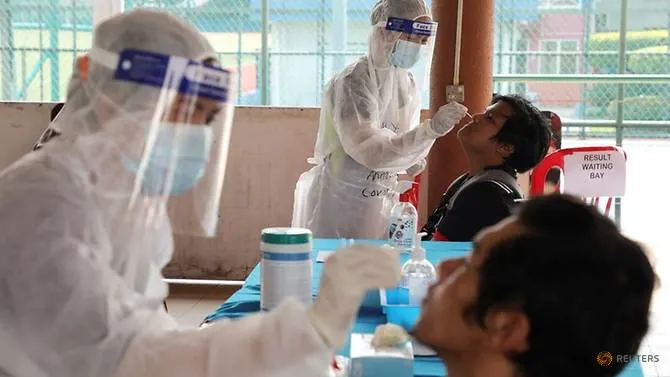 |
| Medical workers collect swab samples from people at a coronavirus disease (COVID-19) testing centre in Petaling Jaya, Malaysia January 25, 2021. REUTERS/Lim Huey Teng |
6,579,814 people have died so far from the coronavirus COVID-19 outbreak as of October 21, 2022
But the full death toll associated directly or indirectly with the COVID-19 pandemic is much bigger.
New estimates from the World Health Organization (WHO) show that the full death toll associated directly or indirectly with the COVID-19 pandemic (described as “excess mortality”) between 1 January 2020 and 31 December 2021 was approximately 14.9 million (range 13.3 million to 16.6 million).
“These sobering data not only point to the impact of the pandemic but also to the need for all countries to invest in more resilient health systems that can sustain essential health services during crises, including stronger health information systems,” said Dr Tedros Adhanom Ghebreyesus, WHO Director-General. “WHO is committed to working with all countries to strengthen their health information systems to generate better data for better decisions and better outcomes.”
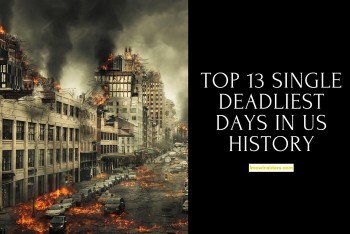 Top 13 Single Deadliest Days In US History Top 13 Single Deadliest Days In US History What are the deadliest single days in the US? How many casualties recorded on those days? From Pearl Harbor, 9/11 to COVID-19, we have picked ... |
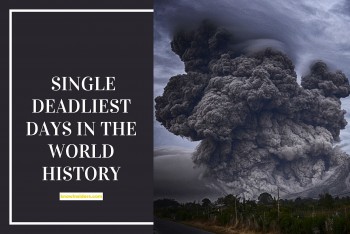 Top 9 Single Deadliest Days In The World History Top 9 Single Deadliest Days In The World History The world witnessed deadliest days with hundreds of thousands of deaths. What days are the deadliest in the world history? |
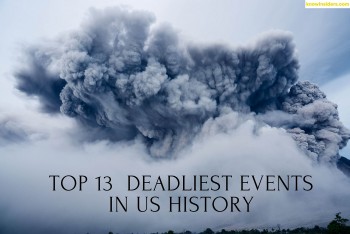 Top 13 Deadliest Events In US History Top 13 Deadliest Events In US History The wars, natural disasters, pandemic and terror attacks: Those events were all sad. They are the deadliest events in the US history. Check out the ... |


